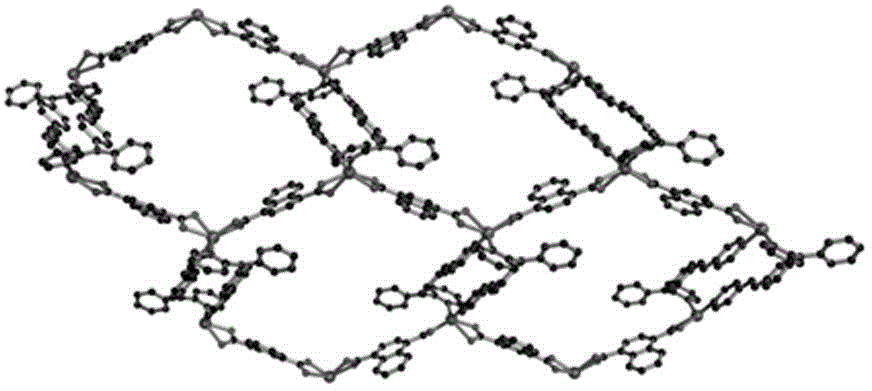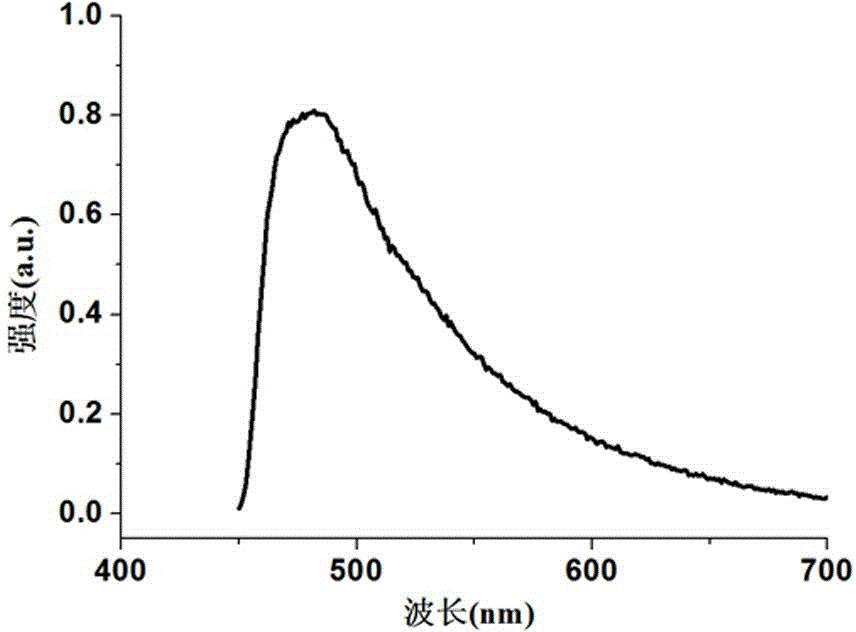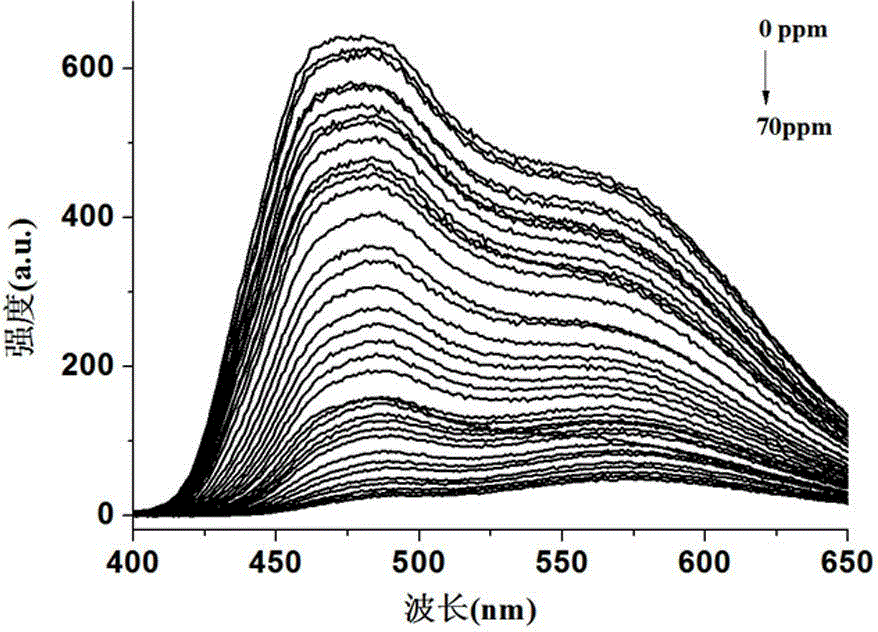Cadmium coordination polymer and application thereof to detection of nitro compounds in water
A technology for cadmium coordination polymers and compounds, which is applied to cadmium organic compounds, chemical instruments and methods, fluorescence/phosphorescence, etc. Product purification, high quenching efficiency, simple post-processing effect
- Summary
- Abstract
- Description
- Claims
- Application Information
AI Technical Summary
Problems solved by technology
Method used
Image
Examples
Embodiment 1
[0040] Embodiment one: the synthesis of cadmium coordination polymer
[0041] Take cadmium nitrate tetrahydrate Cd(NO 3 ) 2 4H 2 O (5 mg, 0.02 mmol), 1,4-naphthalene dioic acid 1,4-H 2 NDC (2 mg, 0.01 mmol) and N-(2-pyridyl)-N-(4-(2-(4-pyridyl)vinyl)phenyl)pyridin-2-amine (7 mg, 0.02 mmol) Put it into an 8mL heat-resistant glass tube, add 3mL of acetonitrile / water mixed solvent with a volume ratio of 1:2, and seal it. React at a constant temperature of 150°C in an oven for 24 hours, and slowly cool down to room temperature at a rate of 5°C / hour. Two days later, yellow crystals were obtained, filtered, washed with ethanol, and dried in vacuum to obtain the target product {Cd(ppvppa)(1,4-NDC) } n , weighing. Yield: 6.5 mg, yield: 48 % (calculated based on metal cadmium); IR (potassium bromide compressed tablet): ν = 3063(m), 1636(w), 1600(s), 1586(s), 1552(m), 1432(s), 1405(s), 1353(s), 1331(s), 787(m) , 547 (m) cm -1 ;Elemental Analysis C 35 h 24 CdN 4 o 4 : Theor...
Embodiment 2
[0048] The product obtained in Example 1 was used to detect 2,4-dinitrophenol in water. The structural formula of 2,4-dinitrophenol is:
[0049]
[0050] Add about 2 mg of cadmium coordination polymer and 2 mL of water into a small test tube, and sonicate in an ultrasonic instrument for about 1 hour, so that the cadmium coordination polymer is evenly dispersed in the water. Subsequently, 2,4-dinitrophenol was added quantitatively. When the amount of 2,4-dinitrophenol added was 70ppm, the fluorescence quenching efficiency reached 97%, and the fluorescence emission intensity of the complex dispersed in water was close to 0, indicating that The fluorescence of the complex is basically quenched, see attached image 3 .
[0051] The fluorescence quenching efficiency refers to the ratio of the change value of the fluorescence intensity before and after adding the nitro compound to the original value:
[0052] Fluorescence quenching efficiency = (the original fluorescence of th...
Embodiment 3
[0056] The product obtained in Example 1 was used to detect p-nitrophenol in water. The structural formula of p-nitrophenol is:
[0057]
[0058] Add about 2 mg of cadmium coordination polymer and 2 mL of water into a small test tube, and sonicate in an ultrasonic instrument for about 1 hour, so that the cadmium coordination polymer is evenly dispersed in the water. Then add p-nitrophenol quantitatively. When the amount of p-nitrophenol added is 120ppm, the fluorescence quenching efficiency reaches 95%, and the fluorescence emission intensity of the complex dispersed in water is close to 0, indicating that the fluorescence of the complex is basically quenched. , see attached Image 6 .
[0059] Figure 7 It is the quenching efficiency diagram when cadmium coordination polymer is dispersed in water and different concentrations of p-nitrophenol are added. It can be seen from the figure that when p-nitrophenol is added at 1-6ppm, the quenching efficiency is linear, and the ...
PUM
 Login to View More
Login to View More Abstract
Description
Claims
Application Information
 Login to View More
Login to View More - R&D
- Intellectual Property
- Life Sciences
- Materials
- Tech Scout
- Unparalleled Data Quality
- Higher Quality Content
- 60% Fewer Hallucinations
Browse by: Latest US Patents, China's latest patents, Technical Efficacy Thesaurus, Application Domain, Technology Topic, Popular Technical Reports.
© 2025 PatSnap. All rights reserved.Legal|Privacy policy|Modern Slavery Act Transparency Statement|Sitemap|About US| Contact US: help@patsnap.com



